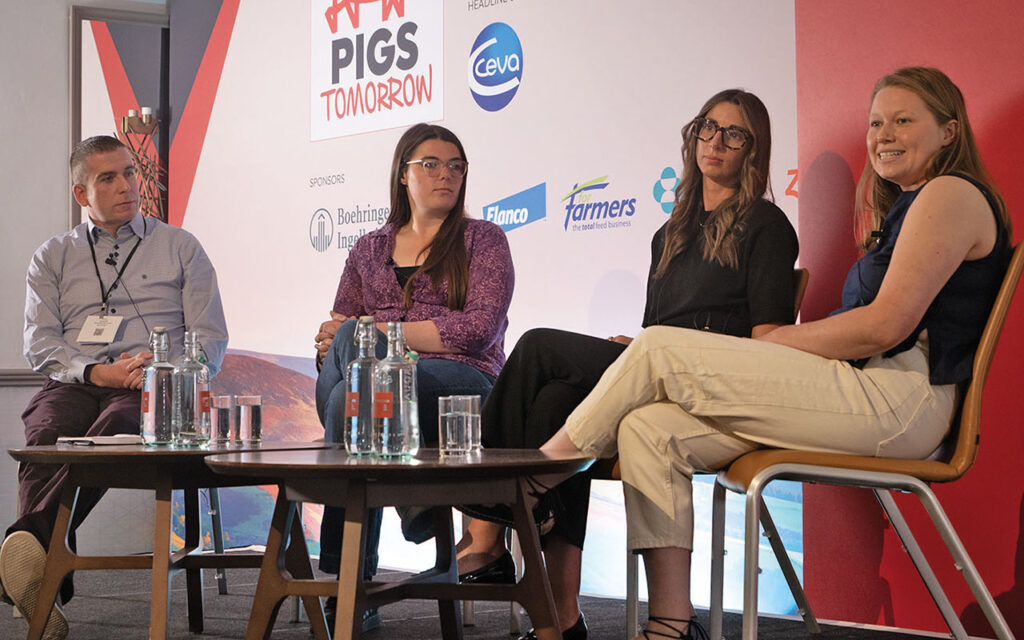Last year exhibited the usual volatility in the Irish pig industry. Prices in the spring were low compared with the highs of summer 2023, but they stabilised in the summer months at €2.20-€2.30/kg.
This was followed by a dip in the autumn due to increased EU meat supply and a stable weekly throughput. As we moved into 2025, the market rebounded with small price increases in March and April and, at the time of writing, we are consistently holding at around €2.28/kg.
Despite global political uncertainties, there is sustained demand across all protein sectors, with Irish beef farmers currently enjoying record highs. Weekly pig throughput remains well over 60,000 head and there has also been strong demand for pigs from Northern Ireland.
Irish pigmeat production rose by an estimated 4% in 2024, reaching approximately 310,000t, as both pig supplies and average -carcase weights increased slightly. Export volume and value also rose by 7%, increasing to 200,000t.
We saw particularly strong export growth to the UK, with an 11% increase, now making it responsible for 32% of our total export value. Exports to the EU rose by 20% and now account for 22% of export value.
While trade to China dropped by 14%, this was offset by a 40% increase in exports to Japan. US exports grew by 40% in 2024, -reaching a value of €25m.
Taiwan link-up
Our farm recently signed a memorandum of understanding with Taiwan’s National Pingtung University of Science and Technology, supporting the Ministry of Education’s Sustainable Smart Swine Technology Research Centre.
The goal is to establish an -international collaboration focused on talent development and knowledge exchange.
We also signed a memorandum of agreement last year with the University of Limerick in support of its veterinary school proposal, which includes students attending practical training modules on our farms to gain real-world experience.
Currently, the island of Ireland has only one veterinary school and, unfortunately, pigs are minimally covered. With the average age of Irish pig vets now in the 50s, we urgently need to ensure that veterinary graduates see pig practice as a viable and rewarding career path.
In my last article, I mentioned that we had decided to invest in solar panels for our farm roofs. So far, one site is completed – a 260kW system, expected to generate 200,000kWh of electricity per year.
Based on current energy prices, this equates to a saving of approximately €1.4m over 25 years. With TAMS grants from the Department of Agriculture covering up to €60,000 for a €90,000 investment, it’s a no-brainer. Many pig farmers are now making similar investments.
We’ve also decided to install a unique slurry aeration system called ePulse, which uses electro–photo-magnetic induction to stimulate microbial activity in the slurry.
It will be interesting to observe the -benefits. And we’ve replaced our 15-year-old Skiold electronic sow feeders. After much research and visits to farms abroad, we’ve chosen Jyga’s GESTAL feeding system.
Pigs Tomorrow
Thank you to Pig World and AHDB for the recent invitation to chair the Young Guns session at Pigs Tomorrow. I had a great discussion with fellow panellists on topical issues such as attracting and motivating staff, consumer engagement and marketing our message.
These are all areas I have been placing more emphasis on. Earlier this year, I arranged for Teagasc to visit and provide pig welfare training for our entire team. Every team member now proudly holds a certificate in pig welfare, and it served as a great refresher for those already certified.
We are also about to launch a new farm website, which I hope will become an educational hub on -sustainable pig farming in Ireland for all audiences.
In February, one of Ireland’s few far-left socialist TDs (MPs) stood up in the Dáil (Irish parliament) and called for a ban on pig farming. One of her more bizarre claims was that ‘pigs have no enrichment other than a chain around their neck’.
If politicians are making such statements – and the public might believe them – then we all have a duty to step up our public engagement efforts.




